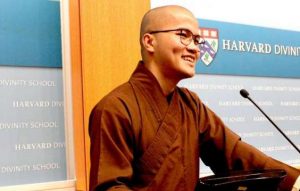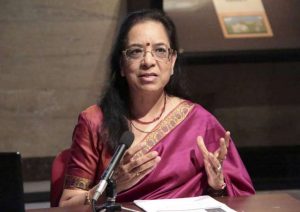Space is endless and the number of worlds is infinite, for all are in mutual counterpoise like a network of innumerable beads.
– Master Taixu, “Science and Buddhism”, in Lectures in Buddhism. Paris: Imp. Union, 1928. 87.
Buddhism is a religion of the old world. It dates back to humanity’s antiquity and emerges from visions of infinite rebirths. To make its vast truths intelligible, Buddhism produced devotees who were uniquely suited to serve their age. But some of these emissaries were unsuccessful in their own lifetimes. One such person was the reformist Master Taixu (1890 – 1947). His progressiveness was matched only by the brilliance with which he argued for Buddhism’s relevance in a world of post-imperial China. He argued for “cultural translation” so that Buddhism could be better propagated. He advocated dialogue with other religions like Christianity. In his essay Science and Buddhism, he wanted Buddhism to learn from science whilst differentiating itself as a spiritual truth. Most of his ideas seem commonsense to us now, but in his day, most of them could not be achieved. His star shone prematurely.
Master Taixu’s reformist legacy lives on in humanist Buddhism* and in those who share his values. Monastics and laypeople alike now understand that he was right. Traditional Buddhism needs to be expressed through a modern language open to all. One of these heirs to modern, scientific-spiritual convictions is Professor Lee Chack-fan, householder and Chairman of Tung Lin Kok Yuen (among other spiritual and charitable roles). In contrast to Master Taixu, who was ahead of his time, Prof. Lee lives and works in a professional milieu that is very receptive to his writing and philosophy. As a recipient of the Golden Bauhinia Star, his contributions to Hong Kong’s cultural life have been a remarkable success. Having studied Buddhism since the 1990’s, he has walked a Middle Path between the polar axes of spiritual tradition and scientific modernity (his background is one of applied science). For
someone who appreciates both culture and science, religion and scientific inquiry are at their best when they actually unite as a vocation.
Prof. Lee finds significant agreement between Buddhist and scientific principles. His observations echo Master Taixu’s insights, with the added advantage of scientific progress since the 1900’s. “Physicists look at Buddhism from a perspective of quantum mechanics,” he told me. “Energy and matter are interrelated. Under the right conditions, energy can be converted to matter, and matter to energy. The entire cosmos is an energy field. This is very similar to the Buddhist concept of emptiness and matter. Emptiness in this case refers to the universe as an energy field, and matter can arise from concentrations of energy, and vice versa,” he noted. Based on this significant parallel, physicists find even more likenesses between their discipline and Buddhism. But just at a basic level, science’s principle of cause and effect mirrors Buddhist doctrines of causality and conditions. For Prof. Lee, this congruence is more than coincidence: it is the result of genuine philosophical similarities between two fields of inquiry.
This is not to say that Buddhism and scientific learning agree on everything. But Prof. Lee also observed that “intellectuals are always in pursuit of wisdom”, something that Buddhism and science concur on. They both appeal to humanity’s higher instincts. The former appeals to the desire for transcendence, and the latter to reason and discovery. Yet science without moral guidance can have uncertain results. It is prajna – spiritual wisdom – that will truly guide science into a noble art. Just as science transforms mortal lives with better medicine, technology, and material comforts, Buddhism will transform the suffering universe into the Pure Land. Master Taixu saw the Pure Land as not a distant paradise, but the true face of the world (and many Mahayana Buddhists today agree).
Prof. Lee has also encountered the contrast between Buddhism’s universal message and the world’s cultural diversity. How can Dharma mean the same thing for a Russian devotee as it might for a Brazilian Buddhist? For centuries, Buddhist practices were regional, locked into geographic boundaries despite diffusing across Eurasia. But as our globalized world becomes ever more integrated, traditional Buddhist traditions (even of the younger “Western” form) are encountering emergent Buddhisms in Eastern Europe, Africa, Latin America, and elsewhere. 21st century Buddhism needs to be sensitive to all cultures whilst appealing to a message that is supposed to be valid for all.
Prof. Lee’s avid interest in global cultures has seen him write extensively on Eurasia. He has travelled across China, the Indian subcontinent, and the Middle East. His co-authored book with Zhang Qian-yi, Footsteps of Civilization (wen ming de zu yin) (2012), is exemplary of his love for the entire ecosystem of the Silk Road: an interconnected economy of empires, religions, and peoples that transformed cultures from Siberia and Inner Asia all the way to the Mediterranean and Northern Europe. Of particular closeness to his heart is Turkey, whose ancestors and history were much closer (in a literal sense) to China than most realize. Prof. Lee understands Buddhism as an ecosystem of human experience. Like the Silk Road, it entails a transformative way of thinking that can require entire lifetimes.
It seems that Buddhism today stands at an intersection of four paradoxical roads: tradition, modernity, cultural identity, and globalization. Which way will it be pulled, or can it strike a balance with all four paths?
Prof. Lee’s position on this question was informed by years of careful reflection. Buddhism dwells in a complex world of “overlapping disciplines”. This tradition demands intellectual nuance because Buddhism is an entire worldview that believers inherit. Buddhists are called to mindfully and sympathetically adapt to science as well as the world’s many cultures. Yet the contemporary diffusion and spread of Buddhism means nothing without the survival of its traditions and continuity. It has therefore summoned devotees of wisdom like Prof. Lee to continue the modern spiritual calling in the 21st century.
* In this context, “humanist” Buddhism refers to the expression of open-minded Buddhism that was uniquely attributed to Master Taixu (ren sheng fo jiao). This is translated roughly as “Buddhism of human life”, indicating a broad emphasis on human issues rather than a systematic philosophy.
















